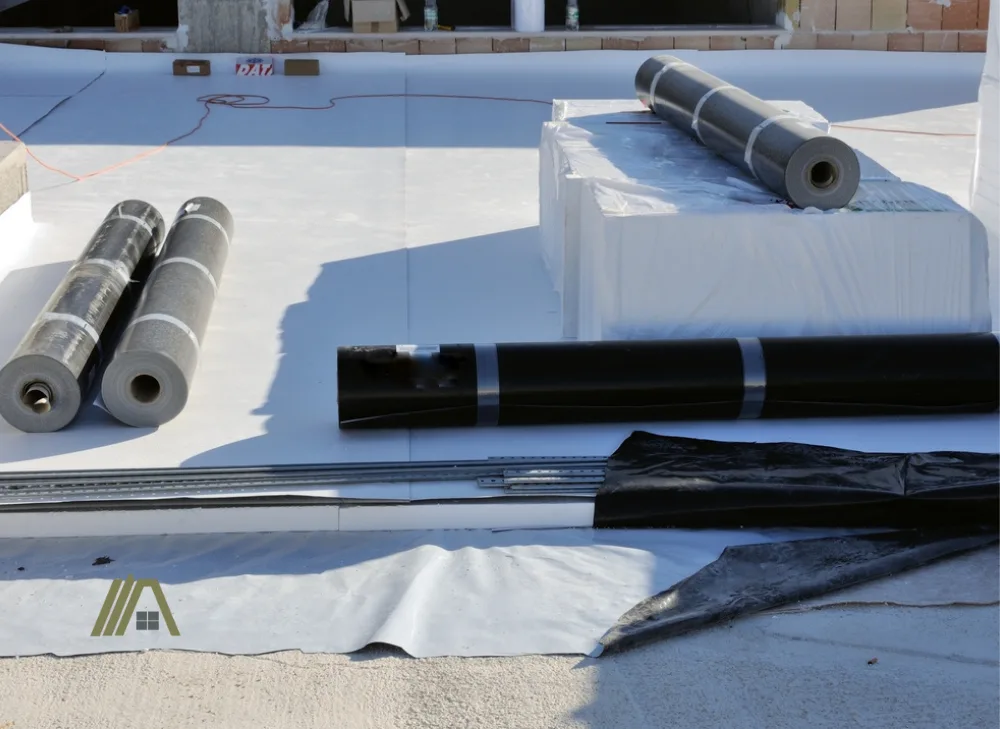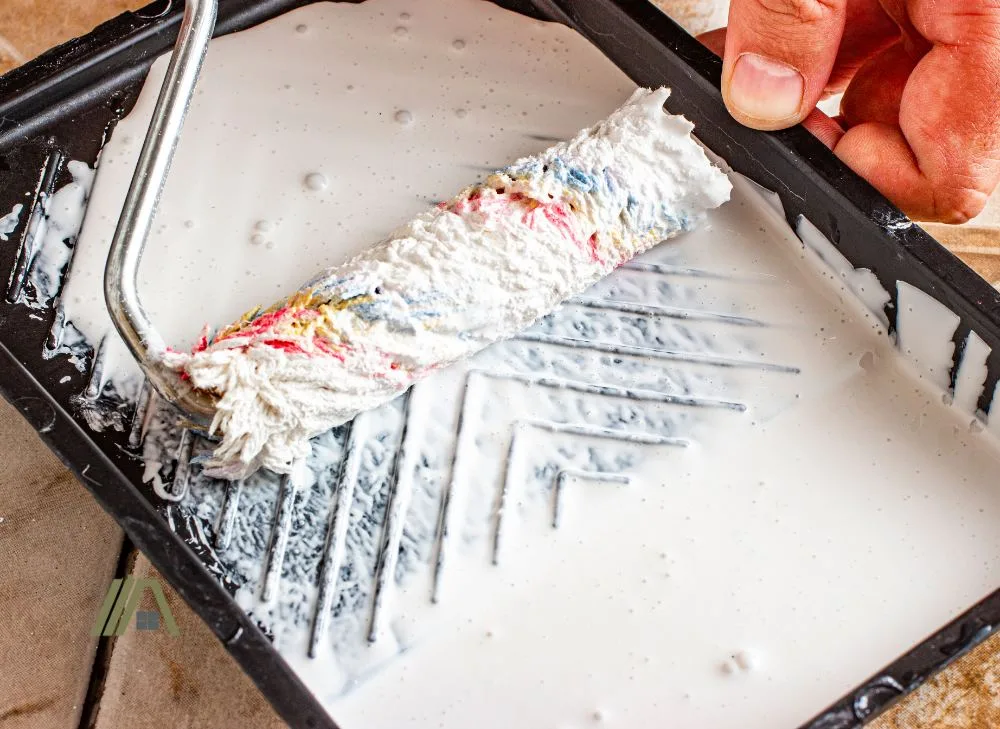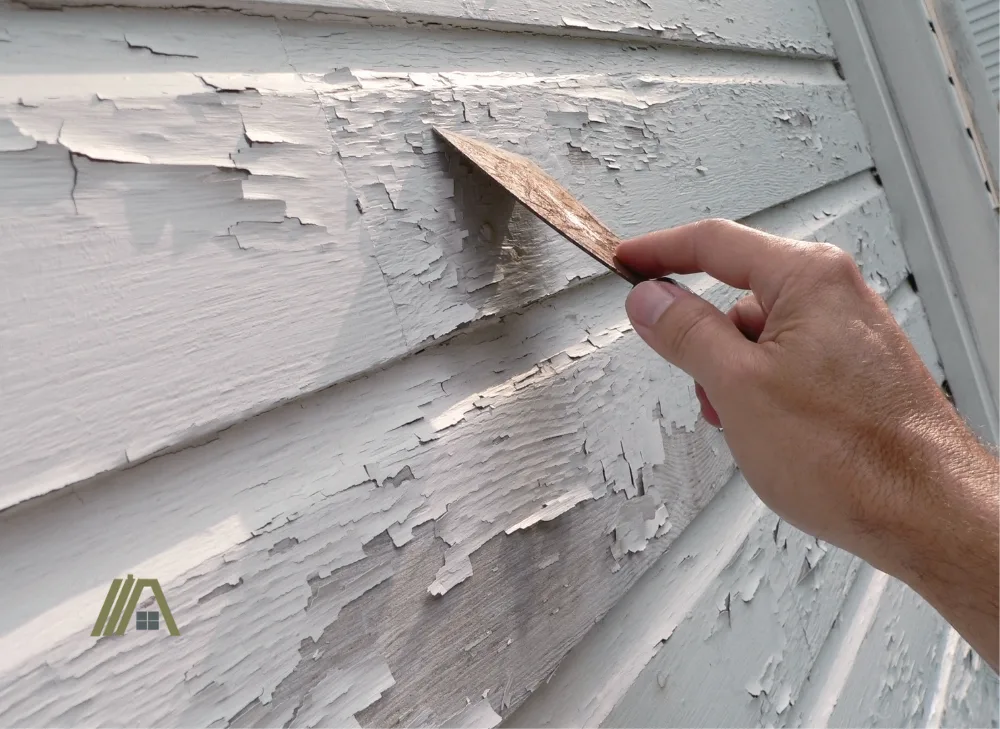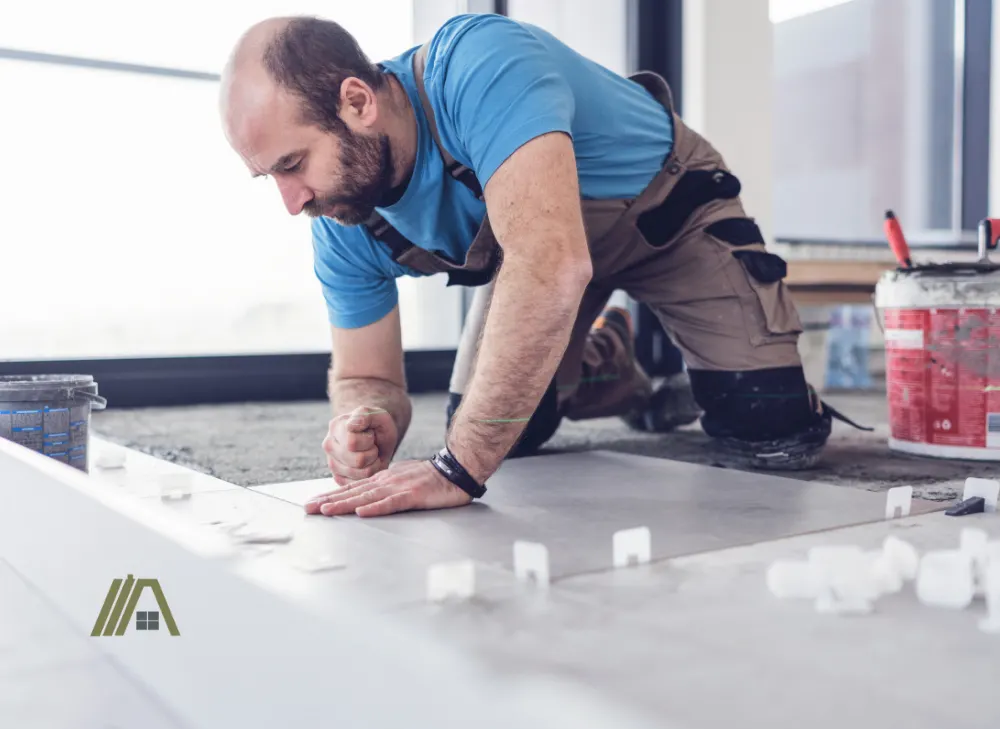Waterproofing membrane can be used in many areas of the home, including basements and bathrooms. In unfinished basements, making the walls look pretty is low on the priority list. In your bathroom or shower stall, aesthetics are important, and covering the waterproofing material is something you have to think about.
The good news is that most waterproofing membranes can be painted over, but you’ll want to take some preparation steps first. Continue reading to learn everything you need to know about painting over waterproofing membrane, including what type of paint to use.

In general, waterproofing membranes can be painted over with water-based paints. Oil-based paints are considered unsuitable by most membrane manufacturers as they don’t adhere correctly and can chemically damage the membrane. Yet, each brand/product can differ, so it is vital to read the product details.
Compatibility With Paint Depends on Product
When it comes to painting your waterproofing membrane, the job may be as simple as applying a new coat of paint. However, waterproofing membranes can differ, so the best thing to do is to check the product label or ask the manufacturer.

Your brand of waterproofing membrane may only be compatible with certain kinds of paints (the most likely scenario), or it may not be compatible with paint at all. Drylok and RedGard, two popular waterproofing membranes can both be painted over, but only with water-based paints.
Use Water-Based Paints Only
Once you have checked the product label and you know for sure that your waterproofing membrane is compatible with paint, choose a water-based latex product for the job.

Water-based paints, such as latex and acrylic, are generally the best option for waterproofing membranes. Water-based paints are better than oil-based paints because they will penetrate the waterproofing membrane just enough to form a bond with it (obviously, they cannot penetrate all the way through).
Oil-based paints like enamel, on the other hand, may sit on top of waterproofing membranes and never truly bond with the material. This can cause peeling or flaking over time.
Additionally, water-based paints are less chemically harsh compared to oil-based paints. If you use oil-based paint, it may compromise the waterproofing capabilities of your membrane.
Tips for Painting Over Waterproofing Membrane
Painting over waterproofing membranes can be a relatively simple task. However, there are a few tips and tricks you can employ to ensure that your waterproofing membrane lasts for years.
Check the Membrane-Paint Compatibility
Check the compatibility of your waterproofing membrane with paint before attempting to paint over it. Make sure that your brand of waterproofing membrane can withstand paint by reading the label or checking with the manufacturer.
Choose the Right Paint
Choose a water-based latex paint, as this will typically work best for waterproofing membranes. As discussed, oil-based paint may not adhere properly to waterproofing membranes and could even damage the waterproofing properties of the membrane.
Allow the Membrane to Dry Completely
Make sure the waterproofing membrane or membrane adhesive is completely dry and set before painting.
To ensure that the waterproofing membrane is fully dry, wait at least 24 hours after installation before painting it. Applying a primer or paint to a damp waterproofing membrane can compromise waterproofing properties and lead to structural damage.
Clean the Membrane Surface Before Painting
It’s important to make sure that your surface is clean, dry, and smooth. If there are any cracks or damage to the waterproofing membrane, repair them before painting.
Then, clean the surface with a damp rag to remove stray dust and debris. Any dirt or dust that remains on the waterproofing membrane could interfere with paint adhesion and result in peeling over time.
Apply the Correct Primer
Apply a primer designed specifically for waterproofing membranes. This will ensure that the waterproofing membrane is completely covered and ready to receive paint.
A good primer will help the paint adhere properly and create a strong bond between your waterproofing membrane and your paint. Wait for the primer to dry completely before applying paint.
Allow Each Coat of Paint to Dry Properly
After applying the first coat of paint, allow it to dry fully before applying the second. If necessary, you can apply a third or even a fourth coat of paint to waterproofing membranes to achieve full coverage. However, be sure to allow the previous coat of paint to dry before adding another. Otherwise, the paint could become damaged or start to peel.
This can even result in the waterproofing peeling off with the paint if it has adhered well to the membrane surface.
Risks of Painting Over Waterproofing Membrane
While painting over a waterproofing membrane is an option, there are some risks that you should consider beforehand.
Flaking or Peeling Paint

Painting directly on the membrane will most likely result in flaking or peeling. To minimize the risk of flaking or peeling paint, use a good primer that adheres well to waterproofing membranes.
Membrane Chemical Breakdown From Harsh Paints
Paints that contain harsh chemicals may damage or weaken the membrane. To prevent a chemical breakdown of your waterproofing membrane, use only water-based paints.
Mechanical Damage to the Membrane
Many waterproofing membranes are not supposed to be wear surfaces because they become vulnerable to scratches and other mechanical damage.
If the surface of your waterproofing membrane is compromised at any point, it becomes ineffective. Over time, wear and tear could jeopardize the integrity of your waterproofing membrane. Even a single deep scratch could expose the waterproofing membrane weakening the whole barrier.
Accidentally Voiding the Warranty
Check with your waterproofing membrane’s manufacturer to make sure that painting it will not void the warranty. While you’re at it, ask the product manufacturer how long your warranty lasts and what it covers.
Tile Is a Better Covering
Alternatively, consider tiling instead of painting. While waterproofing membrane can be successfully painted over, tile is a more durable and waterproof covering in the long run. Additionally, tiles are easier to clean than painted surfaces.

Especially if you’re waterproofing a bathroom or kitchen, don’t paint over the waterproofing membrane; just tile right on top of it instead.
Although waterproofing membrane is designed to withstand exposure to steam and water, over time the wet conditions may damage the paint you have applied. In contrast, tiling can easily withstand water.
As a plus, the waterproofing membrane provides a nice smooth surface to tile on, so you won’t even need a separate primer or waterproofing agent under the tiles. Just use thin-set mortar, and you’re good to go.
Sources
https://www.custombuildingproducts.com/wp-content/uploads/2021/08/TDS-104-051721.pdf
https://www.h2ouse.org/can-you-paint-over-redgard/
https://www.homemindset.com/can-you-paint-over-redguard/
https://artradarjournal.com/2021/12/03/can-i-use-regular-paint-on-top-of-redgard/
